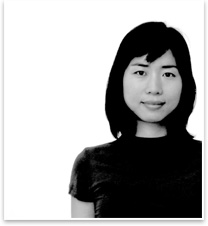 Doer’s
Profile Doer’s
Profile
Jinhee Park, AIA
by Heather Livingston
Contributing Editor
Summary: Jinhee
Park, AIA, is one of eight architects selected to receive the 2009
Young Architects Award. Co-founder of Boston’s SINGLE speed
DESIGN (SsD) with her husband John Hong, AIA, Park currently is teaching
an advanced design studio at the Illinois Institute of Technology
as the Morgenstern Chair Professor and was the 2006 Sasaki Distinguished
Visiting Critic at the Boston Architectural College. Park and Hong
are the designers of the much-lauded Big Dig House, created with
more than 600,000 pounds of salvaged materials from that Boston transportation
project, and for which SsD was awarded the inaugural Metropolis Next
Generation Prize.
Photo of Jinhee Park, AIA, courtesy the architect.
Education. I studied Industrial Design
at Seoul National University in Korea. I worked a couple of years
as an industrial designer and then I came to the U.S. and studied
architecture. I went to the Harvard Graduate School of Design.
Where did you work between undergrad and grad school?
I worked at Samsung Electronics as an industrial designer.
Who would you cite as a professional influence?
Well, my mom, I guess. She was a teacher. She also had a passion
for art.
Can you describe your work in one to two sentences?
We are focused on sustainability—and not just sustainability—but
sustainability that can be created into a new form of design.
Your partner has described your firm’s
work as “new
minimalism.” How is new minimalism different from minimalism?
We also call it “sustainable minimalism.” We think of
minimalism as a concept of oppression, not just an aesthetic choice.
The new minimalist ideal is about stripping down the excess.
The way to achieve sustainability is the same.
We try to find the most efficient way to address the
problem when we receive the project. It’s not just recycling
materials or using recycled materials or creating the building
with super energy efficiency. It is also about creating meaningful
space. Most of that goes further so that it can address and change
people’s preconception about the space and also their lifestyle.
How is your firm faring during the recession?
As a small firm, we haven’t been greatly affected. I mean,
in good times we don’t get a lot of work either. But this is
the time that we can do some more research-based work. We try to
do a lot of research. It is one advantage of being small.
I saw in an article by Boston Globe critic
Robert Campbell, FAIA, that you’re considering opening an
office in Seoul. Is that still on track to happen?
Yes. That is our business model: keeping the
office small so we can be more flexible. Instead of us increasing
our office scale in one spot, we are trying to set up smaller
offices in different locations, because that is the way to get work
that we are interested in. We want to grow in a global way, but without
increasing our size too much.
What advice would you offer to young architects?
This is the same advice that I’ve been getting: Just keep doing
what you’re doing. I thought that was kind of general, but
then I found that it takes time. It takes longer than I thought to
do something—in the field of architecture, especially. Because
of that, you can get distracted from the goal that you set up in
the beginning, so really just continuing what you’re doing
is a hard thing to do, but it’s very crucial. I think it’s
really important, especially for young architects in the beginning
of their practice. |



